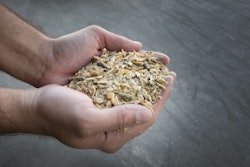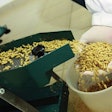
The best way to deal with higher feed prices is to improve FCR
In my experience, when feed prices go up – and they always cycle up and down – the best way to preserve profitability is to improve the feed conversion ratio, or FCR.
This simple index shows how many pounds or kilograms of feed are needed for the animal to produce one pound or kilogram of meat, eggs, milk, etc. Here, we assume that feed composition remains the same, because changing feed composition at a time of financial crisis is a much more difficult exercise. We also assume that production rate (for example, weight gain per day or eggs per hen or milk per day) are already optimized for any given operation.
There are many ways to improve FCR. Some require more time than others, but they all step on sound physiology principles that are already textbook knowledge – which in good times we tend to forget. The brief list below is not exclusive, and a qualified nutritionist should be consulted before attempting any such intervention. Here, they are offered as points of discussion with your nutritionist.
- Use leaner genetics. Lean meat contains 20% protein and 80% water, whereas fat contains 80% lipids and 20% water. One gram of lipids requires approximately four times the feed energy required for depositing one gram of protein. This is why lean genetics are considered more profitable (taste is another story).
- Reduce final market weight. Growing animals tend to deposit more fat than lean tissue toward the end of their fattening period – refer to No. 1 above and find your breakeven point as it is different for each genetic line. This is also something to discuss with your packer/slaughterhouse.
- Balance the feed/ration. In my experience, this alone can vastly improve FCR as it avoids excess nutrients being wasted down the pits. Sometimes, it only takes the removal of certain additives or ingredients that contradict each other, while burdening the animal without reason.
- Use additives that improve FCR. Some but not all additives improve/support either gut health (better absorption of nutrients) or feed digestibility (more nutrients released to be absorbed). Here, we need to be fully aware of the return-on-investment (ROI) index as not all products are created equal.
I will close by repeating the obvious: Keep animals healthy, as sick animals do not produce.


















